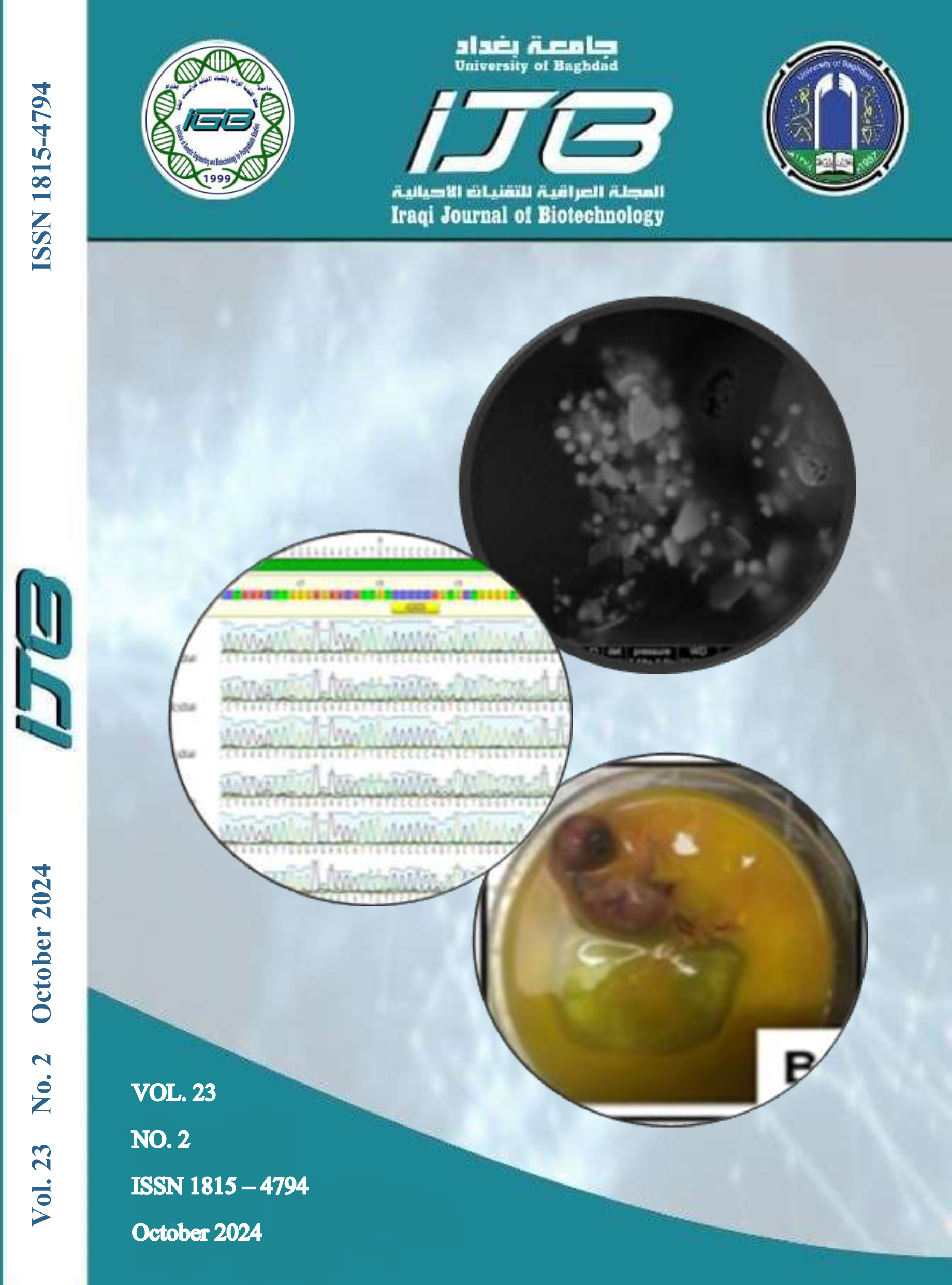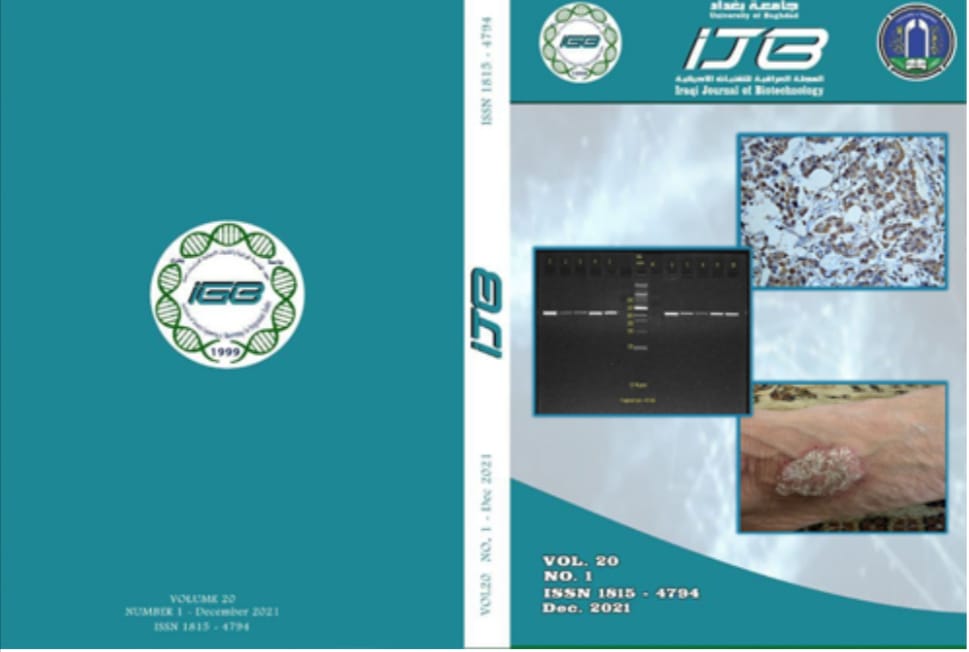Antibacterial Activity and Molecular Detection of Plantaricin
Abstract
Escherichia coli O157:H7 is the cause of more people and animals getting sick with diseases like hemolytic uremic syndrome (HUS) and enterohemorrhagic diseases (EHEC).This study was conducted for molecular detection and evaluate the antibacterial activity and mechanism of action of plantaricin against E. coli O157:H7 in comparison with ciprofloxacin. This experiment was carried out through obtaining plantaricin from Lactobacillus plantarum and study the sensitivity of the E.coli O157H7 by MIC and MBC and identify its mechanism of action by Fe-Scanning electron microscope (Fe-SEM). The plantaricin showed pronounced concentration dependent antibacterial activity. The results of the presence study activity suggest plantaricin may have the perfect to be choice in clinical control. The result of inhibition of plantaricin was ( 25.72 mm to 30.83 mm) while the result of MIC was (0. 625mg/ ml) and MBC was (1.25 mg/ ml) , while for ciprofloxacin, the result was( 16.75 mm to 22.04 mm ) , at (20 and 40µg/ ml ) respectively . I was concluded The Fe-SEM identification indicated that DNA leaked from cells due to the cell lysis of E.coli O 157:H7 and plantaricin interacts with the target cell membrane.


